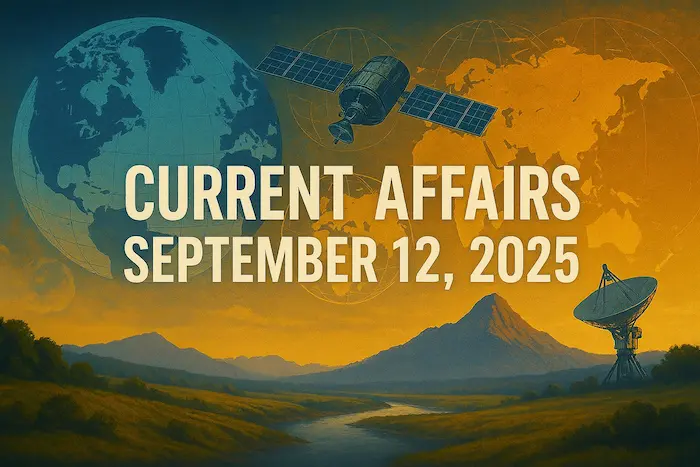1. Himachal Pradesh Becomes Fully Literate State – Governance
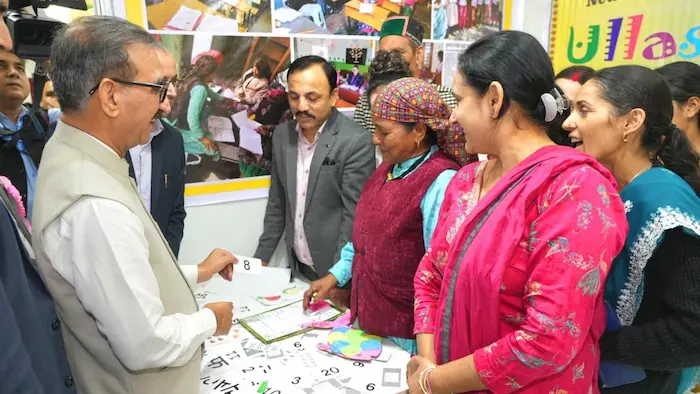
Why in News?
Himachal Pradesh has been declared a ‘fully literate state’, joining the ranks of Goa, Ladakh, Mizoram, and Tripura.
While 100% literacy is an ideal, the designation of ‘fully literate’ means a literacy rate above 95%.
Himachal Pradesh has achieved a literacy rate of 99.3%.
Key Concepts & Definitions
What Does “Fully Literate” Mean?
- A technical term used by the government to denote >95% literacy in a state or UT.
- Does not imply 100% literacy.
Literacy (As Defined in India):
According to the Ministry of Education, literacy means:
- The ability to read, write, and perform basic arithmetic with understanding.
- Also includes digital and financial literacy, in line with modern needs.
Key Government Initiative: ULLAS Programme
Understanding Lifelong Learning for All in Society (ULLAS)
- Launched: 2022 by the Ministry of Education.
- Target Group: Adults aged 15+ who missed formal schooling.
- Objective: Achieve 100% literacy by 2030, aligned with:
- UN Sustainable Development Goals (SDG-4)
- National Education Policy (NEP) 2020
How It Works:
- Survey: Identification of non-literate adults.
- Learning: Provision of foundational education – reading, writing, numeracy, digital & financial skills.
- Assessment: Through FLNAT (Functional Literacy Numeracy Assessment Test).
- Certification: Provided by the National Institute of Open Schooling (NIOS).
Why States Like Himachal Achieve This Faster:
- Smaller populations or historically high literacy levels.
- Strong community engagement and access to infrastructure.
- Long-standing focus on educational outreach in hilly and remote areas.
Significance of the Achievement:
- Reinforces Himachal’s reputation as a progressive, human development-oriented state.
- Contributes to inclusive development and women empowerment, as many adult learners are women.
- Enhances workforce readiness by equipping adults with basic and digital skills.
- Sets a model for other states, especially larger ones with complex literacy challenges.
Exam Connect – Possible Questions
Prelims
- Which of the following best defines a ‘Fully Literate State’ as per the Ministry of Education?
A. A state with a 100% literacy rate
B. A state with >90% literacy rate
C. A state with >95% literacy rate
D. A state that has implemented the NEP 2020
Answer: C. A state with >95% literacy rate - What is the purpose of the ULLAS Programme launched by the Government of India?
A. Promote early childhood education
B. Provide vocational training to youth
C. Promote adult literacy and lifelong learning
D. Provide free digital devices to school students
Answer: C. Promote adult literacy and lifelong learning
Mains
- Himachal Pradesh has recently been declared a fully literate state. Critically examine the role of adult education in achieving inclusive and equitable quality education.
- Discuss how schemes like ULLAS contribute to the implementation of National Education Policy (NEP) 2020 and India’s commitment to Sustainable Development Goals (SDGs)
2. The Way Forward on Katchatheevu & Palk Strait Disputes – International Relations
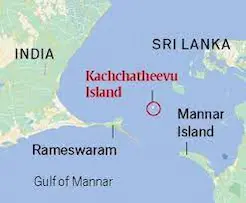
Why in News?
Tensions between India and Sri Lanka over the Katchatheevu Island and fisheries conflict in the Palk Strait have resurfaced.
These issues reflect deeper historical, legal, ecological, and livelihood-related challenges in bilateral relations.
Background & Key Concepts
Katchatheevu Island Dispute:
- Location: A 285-acre uninhabited island in the Palk Strait between Tamil Nadu and Sri Lanka.
- Historical Context: Administered historically by the Jaffna Kingdom (present-day Sri Lanka), but also used by Indian fishermen and pilgrims.
- Treaty of 1974:
- Under the India–Sri Lanka Maritime Boundary Agreement, India accepted Sri Lanka’s sovereignty over Katchatheevu.
- India relinquished territorial claims, but fishing rights were left ambiguous, leading to long-term contention.
Palk Strait Fisheries Dispute:
- Palk Strait: Narrow body of water between Tamil Nadu and northern Sri Lanka; rich in marine biodiversity.
- Root Cause:
- Indian mechanised bottom trawlers (from Tamil Nadu) fish in Sri Lankan waters.
- These destroy marine habitats and violate Sri Lanka’s 2017 ban on bottom trawling.
- Impact:
- Depletion of fish stocks.
- Tensions between Indian fishermen and Sri Lankan Navy.
- Arrests and seizures of Indian boats.
Legal and Diplomatic Dimensions
Legal Status:
- International Law:
- Treaties defining maritime boundaries (like the 1974 agreement) are binding under Customary International Law.
- Sovereignty over Katchatheevu is settled.
- Fishing Rights:
- Not explicitly guaranteed under the treaty.
- Require fresh bilateral negotiation.
Diplomatic Efforts:
- Multiple Joint Working Group (JWG) meetings have occurred but yielded limited progress.
- India’s Neighbourhood First Policy calls for resolving such disputes amicably.
Way Forward – Possible Solutions
1. Shift to Sustainable Fishing
- Encourage Tamil Nadu fishermen to transition from bottom trawling to sustainable methods.
- Provide financial and technological support for this transition.
2. Model Bilateral Frameworks
- Baltic Sea Fisheries Convention: European countries share quotas and enforce sustainable practices.
- India and Sri Lanka could adopt similar quota-sharing agreements.
3. Joint Mechanisms
- Establish India–Sri Lanka Fisheries Management Authority:
- Coordinate seasonal access.
- Regulate fishing zones.
- Avoid encroachment and arrests.
4. Compensation & Livelihood Schemes
- Offer alternative livelihood support to fishermen during the transition.
- Improve marine conservation efforts and community engagement.
5. Track II Diplomacy
- Involve civil society, fisher unions, and environmentalists from both countries.
- Build empathy, reduce conflict, and promote cooperation at grassroots level.
Exam Connect – Possible Questions
Prelims
- Which treaty established Sri Lanka’s sovereignty over Katchatheevu Island?
A. Indo-Sri Lanka Peace Accord, 1987
B. India–Sri Lanka Maritime Boundary Agreement, 1974
C. Colombo Agreement, 1965
D. Indian Ocean Peace Treaty, 1972
Answer: B. India–Sri Lanka Maritime Boundary Agreement, 1974 - Which of the following is true about the Palk Strait?
A. It separates India from Maldives
B. It lies between Tamil Nadu and Sri Lanka
C. It is part of the Arabian Sea
D. It forms part of the Ganga River delta
Answer: B. It lies between Tamil Nadu and Sri Lanka
Mains
- Discuss the ecological and diplomatic challenges posed by the Palk Strait fisheries dispute between India and Sri Lanka. Suggest a roadmap for resolution.
- Though the sovereignty of Katchatheevu Island is settled, the fishing rights remain contentious. Analyze this issue in the context of India’s Neighbourhood First policy and sustainable marine governance.
3. Geotagging Buildings in the 2027 Census – Process and Benefits – Governance

Why in News?
The 2027 Census of India is set to introduce multiple digital innovations, including:
- Digital enumeration
- Self-enumeration
- Caste data collection (first time since 1931)
- Geotagging of all buildings – a major technological step to ensure better data accuracy, planning, and delivery of welfare schemes.
What is Geotagging?
Geotagging = Assigning precise GPS coordinates (latitude & longitude) to a physical location or object (in this case, buildings).
- Done using smartphones or digital devices during field visits.
- Data is recorded and mapped in GIS (Geographic Information System).
- Each Census House will be uniquely identified and mapped.
How Will It Work?
Phase 1: Houselisting Operations (HLO) – April to Sept 2026
- Enumerators will:
- Visit each building.
- Use mobile apps for geotagging.
- Classify buildings as:
- Residential
- Non-residential
- Partly residential
- Landmarks
Phase 2: Population Enumeration – Begins Feb 2027
- Demographic and household-level data will be collected for geotagged houses.
Definition Recap:
- A Census House (per Census 2011) is a building or part of it with a separate main entrance, used for residential or other purposes.
- A Household is a group living together and sharing a common kitchen.
Why Is Geotagging Important?
| Benefits | Explanation |
|---|---|
| Eliminates Duplication | Ensures each building is counted only once |
| Improves Coverage | Identifies previously missed or informal settlements |
| Supports Urban Planning | Enables spatial mapping of households and facilities |
| Better Welfare Targeting | Helps locate beneficiaries and deliver schemes like PMAY more accurately |
| Digital Record-Keeping | Creates a real-time, updatable, spatial database |
| Increases Enumerator Efficiency | Aids in assigning appropriate workload zones based on real building data |
Link to Governance and Public Policy
- Use of Technology in Governance – shows digital transformation of traditional processes.
- Data-Driven Planning – essential for urban/rural infrastructure, housing, health, sanitation, and education.
- Smart Cities & Digital India – integrates with geospatial data for smarter service delivery.
- Transparency & Accountability – avoids ghost entries, ensures real-time tracking of infrastructure.
Past Implementation Example
- Pradhan Mantri Awas Yojana (PMAY) – used geotagging to verify location of houses under construction/completed.
- Improved transparency and helped in monitoring fund usage and physical progress.
Exam Connect – Possible Questions
Prelims
- What does geotagging in the context of Census 2027 refer to?
A. Linking social groups to demographic data
B. Assigning GPS coordinates to buildings
C. Digitizing historical maps
D. Creating new household definitions
Answer: B. Assigning GPS coordinates to buildings - In which phase of Census 2027 will geotagging be implemented?
A. Population Enumeration Phase
B. Electoral Roll Mapping Phase
C. Houselisting Operations Phase
D. Self-Enumeration Phase
Answer: C. Houselisting Operations Phase
Mains
- Discuss the role of geotagging in transforming India’s Census operations. How will this initiative contribute to better governance and urban planning?
- Digital tools like geotagging are reshaping public policy delivery mechanisms. Evaluate the opportunities and challenges involved in adopting such technologies in large-scale government surveys.
4. Swachh Vayu Survekshan (SVS) 2025 – Environment
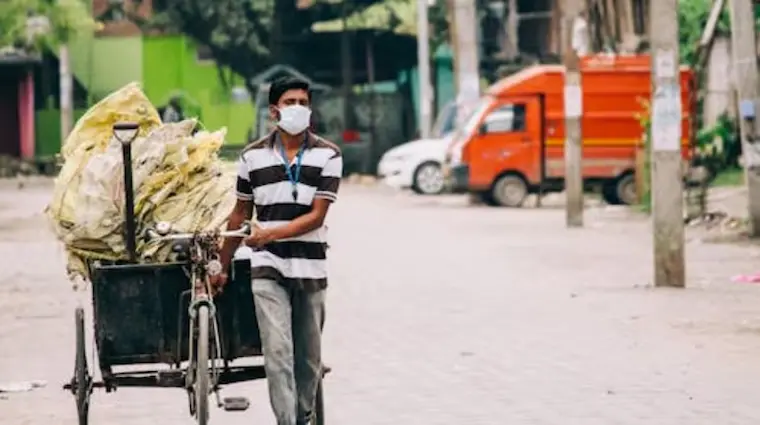
Why in News?
Indore has been ranked as the cleanest city among million-plus population cities in the Swachh Vayu Survekshan (SVS) 2025, moving up from 6th place in 2024.
What is Swachh Vayu Survekshan?
Swachh Vayu Survekshan (SVS) is an annual air quality ranking survey conducted by the Ministry of Environment, Forest and Climate Change (MoEFCC) under the National Clean Air Programme (NCAP).
Objectives of SVS:
- Promote healthy competition among cities to reduce air pollution.
- Accelerate on-ground implementation of air quality improvement strategies.
- Track progress of cities under NCAP based on quantifiable indicators.
SVS 2025 – Highlights
| City Category | Top City |
|---|---|
| Million-plus population | Indore |
| 3–10 lakh population | Jabalpur, Agra |
| Under 3 lakh | Data not specified in current brief |
- Indore improved significantly from 6th place (2024) to 1st (2025).
- Cities are grouped by population into:
- Million-plus
- 3–10 lakh
- Under 3 lakh
Survey Methodology & Evaluation
Parameters Used (Key Focus Areas – Total: 8 Parameters):
- Reduction in PM10 and PM2.5 concentrations
- Road dust mitigation measures (e.g., mechanical sweeping, water sprinkling)
- Solid waste management efficiency
- Industrial emission control (compliance with emission norms)
- Vehicular emission management
- Public awareness campaigns
- Green cover enhancement
- Adoption of clean fuels and technologies
Assessment Method:
- Multi-tier approach:
- On-ground actions (qualitative inputs)
- Measurable outcomes (quantitative data)
- Emphasis on real-world impact and data-backed performance.
Link to National Clean Air Programme (NCAP)
Launched: 2019
Aim: Reduce PM2.5 and PM10 levels by 20-30% by 2024 (from 2017 levels).
Focus Cities: Initially 102 non-attainment cities, now expanded.
SVS acts as an evaluation and motivation tool under NCAP to ensure accountability and targeted interventions.
Relevance for Urban Governance & Sustainability
- Encourages city-level environmental governance.
- Fosters citizen participation in clean air initiatives.
- Aids data-driven urban planning.
- Supports SDG Goal 11 – Sustainable Cities and Communities.
- Contributes to public health, climate change mitigation, and urban resilience.
Exam Connect – Possible Questions
Prelims
- Which of the following statements about Swachh Vayu Survekshan is correct?
A. It is conducted by the Ministry of Housing and Urban Affairs
B. It assesses water quality in Indian cities
C. It is conducted under the National Clean Air Programme
D. It ranks only capital cities of Indian states
Answer: C. It is conducted under the National Clean Air Programme - Which city secured the top rank among million-plus population cities in the Swachh Vayu Survekshan 2025?
A. Surat
B. Agra
C. Indore
D. Ahmedabad
Answer: C. Indore
Mains
- Discuss the role of initiatives like Swachh Vayu Survekshan in improving urban air quality in India. How can such rankings influence sustainable urban governance?
- With reference to the National Clean Air Programme, evaluate the effectiveness of city-level interventions in combating air pollution. Suggest measures to enhance implementation and accountability.
5. Gyan Bharatam Mission – Preserving India’s Manuscript Heritage – Culture & History
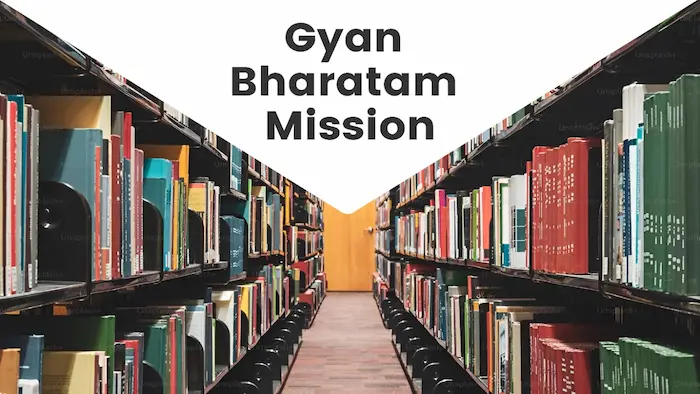
Why in News?
The Ministry of Culture has launched the ‘Gyan Bharatam Mission’, a national-level initiative for the preservation, digitisation, and dissemination of India’s rich manuscript heritage.
Key Highlights:
| Feature | Details |
|---|---|
| Scheme Type | Central Sector Scheme |
| Duration | 2024–2031 |
| Budget | ₹482.85 crore |
| Nodal Ministry | Ministry of Culture |
| Vision | Merge heritage with innovation, align with Viksit Bharat @2047 vision |
| Digital Goal | Make manuscripts globally accessible as living knowledge systems |
Background
- Builds upon the earlier National Mission for Manuscripts (NMM) launched in 2003.
- Under NMM, over 44.07 lakh manuscripts were documented in the Kriti Sampada digital repository.
- Manuscripts include texts in Sanskrit, Pali, Prakrit, Tamil, Persian, Arabic, and other classical languages.
Objectives of Gyan Bharatam Mission
- Preserve India’s knowledge heritage by using scientific conservation methods.
- Digitise rare manuscripts using AI-based tools.
- Create a National Digital Repository accessible to scholars, students, and the public.
- Promote research, innovation, and public engagement with manuscript culture.
- Foster cultural pride and continuity through youth participation and start-up innovation.
Key Components
1. Identification & Documentation
- Establishing Manuscript Resource Centres (MRCs) across the country.
- Systematic survey and registration of manuscripts.
- Focus on both institutional and private collections.
2. Conservation & Restoration
- Upgrading Manuscript Conservation Centres (MCCs).
- Use of scientific techniques for preservation of fragile manuscripts (de-acidification, climate control, etc.).
3. Digitisation & Digital Repository
- Use of AI-based Handwritten Text Recognition (HTR) for decoding ancient scripts.
- Building a cloud-based National Digital Manuscript Repository.
- Public access through online portals and mobile platforms.
4. Youth and Public Engagement
- Launch of initiatives like Gyan-Setu AI Innovation Challenge.
- Involves start-ups, technologists, researchers, and the general public in manuscript innovation.
Cultural Significance
- Manuscripts are treasures of civilisational wisdom – covering subjects like astronomy, medicine (Ayurveda), mathematics, architecture, arts, law, and spirituality.
- Preserving them is key to India’s identity as Vishwa Guru (Global Teacher).
- Supports UNESCO Convention for Safeguarding Intangible Cultural Heritage.
Exam Connect – Possible Questions
Prelims
- The Gyan Bharatam Mission is primarily focused on:
A. Promoting Sanskrit in schools
B. Preserving and digitising India’s manuscript heritage
C. Documenting tribal art forms
D. Digitising ancient coins and artefacts
Answer: B. Preserving and digitising India’s manuscript heritage - The Kriti Sampada repository is associated with which of the following?
A. Indian Council of Historical Research
B. Sahitya Akademi
C. National Mission for Manuscripts
D. Archaeological Survey of India
Answer: C. National Mission for Manuscripts
Mains
- India’s manuscript heritage is a repository of timeless wisdom and civilisational values. Discuss how the Gyan Bharatam Mission integrates technology and culture for effective preservation.
- The digital preservation of manuscripts offers both opportunities and challenges. Examine how initiatives like the Gyan Bharatam Mission can contribute to cultural continuity and research.
6. India’s Shipbuilding Growth – Poised to Enter Global Top 5 – Economy

Why in News?
The Government of India has announced ambitious plans to transform India into one of the top 5 global shipbuilding nations by 2047, as part of its long-term strategy to boost the Blue Economy.
This was recently highlighted at the INMEX SMM India 2025 event in Mumbai.
What is the Blue Economy?
The Blue Economy refers to the sustainable use of ocean resources for economic growth, improved livelihoods, and jobs while preserving the health of ocean ecosystems.
Current Status of India’s Maritime & Shipbuilding Sector
| Indicator | Current Status |
|---|---|
| Global Maritime Rank | 16th largest maritime nation |
| Shipbuilding Share (Global) | <1% of global shipbuilding tonnage |
| Maritime GDP Contribution | ~4% of India’s GDP |
| Indian Seafarers | 12% of global maritime workforce |
Government’s Strategic Goals
| Target Year | Goal |
|---|---|
| 2030 | Enter top 10 global shipbuilding nations |
| 2047 | Secure position among top 5 shipbuilding powers |
| GDP Target | Increase maritime sector’s GDP share from 4% to 12% |
| Seafarers | Expand India’s global seafarer share from 12% to 25% |
Government Measures to Promote Shipbuilding
1. Financial Support Schemes
- Shipbuilding Financial Assistance Scheme: Capital support for shipbuilders.
- Shipbreaking Credit Note Scheme: Encourages ship recycling industry.
- Green Ship Subsidies: Up to 30% upfront subsidy for building eco-friendly ships.
2. Development Funds & Missions
- $3 Billion Maritime Development Fund (MDF):
- 45% earmarked for shipbuilding and repair sector.
- National Shipbuilding Mission:
- Modernisation of public and private shipyards.
- Focus on technology, workforce training, and R&D.
3. Policy & Infrastructure Reforms
- 100% FDI allowed under automatic route in shipbuilding and maritime logistics.
- $82 Billion Port Investment Plan (by 2035) to expand port handling capacity.
- Promotion of shipbuilding and repair clusters to develop ecosystem-based growth.
- Public-Private Partnerships (PPPs) in port connectivity and logistics.
Importance of Shipbuilding for India’s Economy
| Area of Impact | Explanation |
|---|---|
| Job Creation | Labour-intensive sector; supports employment in coastal areas. |
| Export Competitiveness | Reduces dependence on foreign-built ships. |
| Strategic Security | Supports indigenous defence shipbuilding. |
| Technological Growth | Encourages innovation in marine engineering, AI, and automation. |
| Sustainability | Promotes green shipping, low-carbon marine transportation. |
Global Context
- Global Leaders: China, South Korea, and Japan dominate the shipbuilding market.
- India’s focus is to:
- Reduce dependency on foreign ship imports.
- Capture emerging markets, especially in green shipbuilding.
- Align with IMO 2050 decarbonisation goals through clean marine technologies.
Prelims
- What is the current global share of India in shipbuilding tonnage?
A. 5%
B. 2%
C. <1%
D. 10%
Answer: C. <1% - Which of the following correctly describes the ‘Blue Economy’?
A. Use of ocean resources for industrialisation without environmental concern
B. Traditional fishing economy of coastal regions
C. Sustainable use of ocean resources for economic growth and ocean health
D. Economy based on blue-collar jobs
Answer: C. Sustainable use of ocean resources for economic growth and ocean health
Mains
- India aims to become one of the top five global shipbuilding nations by 2047. Discuss the potential of the shipbuilding sector in strengthening India’s Blue Economy and enhancing its global maritime presence.
- Examine the key policy measures introduced to boost India’s shipbuilding industry. How can public-private partnerships and FDI play a transformative role in this sector?

